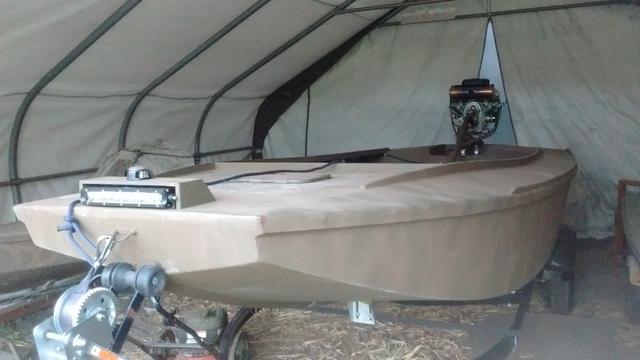Hello,
I've read with interest on the boat builds regarding mounted storage tanks in the bows of the builds.
Curious if anyone has used a portable tank and installed a sending unit/fuel gauge into the portable tank. I found a video of a homemade jobber that used 4-prong boat light adapters. Seemed pretty slick, but there seemed to be a lot of over engineering in getting the float drop to fit the old gauge slot. I currently have a steel tank, but can switch to a plastic easily.
My boat is an aluminum v-hull. To balance the boat better (I seem to hunt by myself much more often), I'm considering moving fuel up front. Not much of an issue with the tank in the bow, unless I decide to put a floor/hatch. I already get nervous trying to decipher how much fuel is "really" left, the floats on portable tanks never seem to give a very accurate description of what's left in the tank, and my Lift/Shake method has left me stranded before [blush]
I currently use a 2-stroke, but anticipate changing to a 4-stroke. Not that having an "E" makes me more safe, but better able to plan BEFORE the tank runs out and I'm in the wrong wind, etc.
This might strictly be an exercise of me overthinking a solution and trying to find a problem for it.
Best,
Rob
I've read with interest on the boat builds regarding mounted storage tanks in the bows of the builds.
Curious if anyone has used a portable tank and installed a sending unit/fuel gauge into the portable tank. I found a video of a homemade jobber that used 4-prong boat light adapters. Seemed pretty slick, but there seemed to be a lot of over engineering in getting the float drop to fit the old gauge slot. I currently have a steel tank, but can switch to a plastic easily.
My boat is an aluminum v-hull. To balance the boat better (I seem to hunt by myself much more often), I'm considering moving fuel up front. Not much of an issue with the tank in the bow, unless I decide to put a floor/hatch. I already get nervous trying to decipher how much fuel is "really" left, the floats on portable tanks never seem to give a very accurate description of what's left in the tank, and my Lift/Shake method has left me stranded before [blush]
I currently use a 2-stroke, but anticipate changing to a 4-stroke. Not that having an "E" makes me more safe, but better able to plan BEFORE the tank runs out and I'm in the wrong wind, etc.
This might strictly be an exercise of me overthinking a solution and trying to find a problem for it.
Best,
Rob


